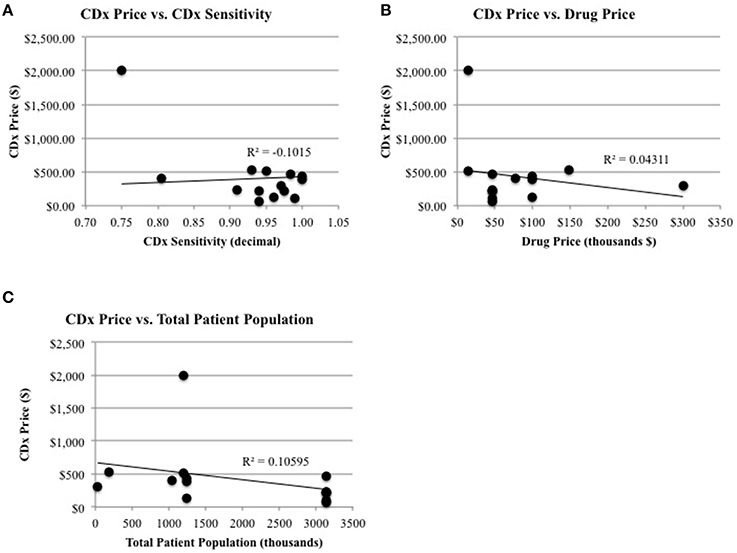
95% of researchers rate our articles as excellent or good
Learn more about the work of our research integrity team to safeguard the quality of each article we publish.
Find out more
CORRECTION article
Front. Genet. , 07 June 2016
Sec. Genetics of Aging
Volume 7 - 2016 | https://doi.org/10.3389/fgene.2016.00104
This article is part of the Research Topic Should we Treat Aging as a Disease? Academic, pharmaceutical, healthcare policy and pension fund perspectives View all 15 articles
This article is a correction to:
A Quantitative Assessment of Factors Affecting the Technological Development and Adoption of Companion Diagnostics
 Dee Luo1
Dee Luo1 James A. Smith2,3
James A. Smith2,3 Nick A. Meadows4
Nick A. Meadows4 Anna Schuh5
Anna Schuh5 Katie E. Manescu6
Katie E. Manescu6 Kim Bure7
Kim Bure7 Benjamin Davies8
Benjamin Davies8 Rob Horne9
Rob Horne9 Mike Kope10
Mike Kope10 David L. DiGiusto11
David L. DiGiusto11 David A. Brindley1,2,3,12,13,14*
David A. Brindley1,2,3,12,13,14*A corrigendum on
A Quantitative Assessment of Factors Affecting the Technological Development and Adoption of Companion Diagnostics
by Luo, D., Smith, J. A., Meadows, N. A., Schuh, A., Manescu, K. E., Bure, K., et al. (2015). Front. Genet. 6:357. doi: 10.3389/fgene.2015.00357
With regards to Figure 3: Significant relationships and non-significant relationships for CDx price, the graph (A) of CDx Price vs. CDx Sensitivity as well as the corresponding legend, is in error. Graph A wrongly depicts a trendline unadjusted for outlier effect, and the correct graph, as described in the text, is shown below. The corresponding legend has been likewise corrected to reflect the correct graph title and statistical values described in the text. This correction does not affect the scientific validity of the results, as the discrepancy was with the presentation of results.

Figure 3. Significant relationships and non-significant relationships for CDx price. (A) There is a significant relationship between CDx price and CDx sensitivity (R2 = −0.10, p = 0.04). (B) There are non-significant relationships between CDx price and drug price (R2 = 0.043, p = 0.70) and (C) the total patient population (R2 = 0.105 p = 0.59).
All authors listed, have made substantial, direct and intellectual contribution to the work, and approved it for publication.
The authors declare that the research was conducted in the absence of any commercial or financial relationships that could be construed as a potential conflict of interest.
Keywords: companion diagnostic, combinational therapy, risk:benefit appraisal, healthcare risk management, personalized medicine, stratified medicine, healthcare translation, commercialization
Citation: Luo D, Smith JA, Meadows NA, Schuh A, Manescu KE, Bure K, Davies B, Horne R, Kope M, DiGiusto DL and Brindley DA (2016) Corrigendum: A Quantitative Assessment of Factors Affecting the Technological Development and Adoption of Companion Diagnostics. Front. Genet. 7:104. doi: 10.3389/fgene.2016.00104
Received: 22 April 2016; Accepted: 24 May 2016;
Published: 07 June 2016.
Edited and reviewed by: Alex Zhavoronkov, The Biogerontology Research Foundation, UK
Copyright © 2016 Luo, Smith, Meadows, Schuh, Manescu, Bure, Davies, Horne, Kope, DiGiusto and Brindley. This is an open-access article distributed under the terms of the Creative Commons Attribution License (CC BY). The use, distribution or reproduction in other forums is permitted, provided the original author(s) or licensor are credited and that the original publication in this journal is cited, in accordance with accepted academic practice. No use, distribution or reproduction is permitted which does not comply with these terms.
*Correspondence: David A. Brindley, ZGF2aWQuYnJpbmRsZXlAbmRvcm1zLm94LmFjLnVr
Disclaimer: All claims expressed in this article are solely those of the authors and do not necessarily represent those of their affiliated organizations, or those of the publisher, the editors and the reviewers. Any product that may be evaluated in this article or claim that may be made by its manufacturer is not guaranteed or endorsed by the publisher.
Research integrity at Frontiers

Learn more about the work of our research integrity team to safeguard the quality of each article we publish.